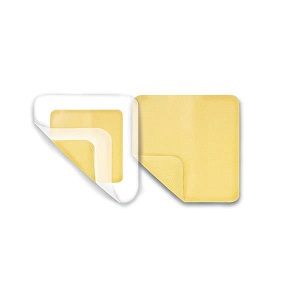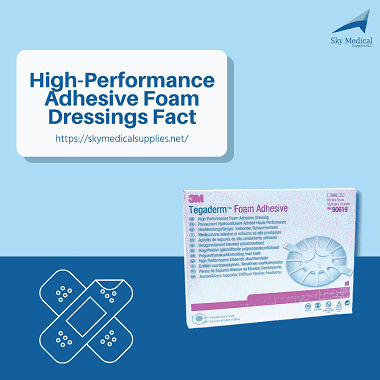
Medical device-related pressure ulcer (MDRPU)
Many patients need medical devices to live. Patients who have to live with medical devices face a constant pressure-related risk of potential for disfigurement and loss of function due to Medical Device-Related Pressure Ulcers (MDRPU). Medical device-related pressure ulcers generally are associated with healthcare settings and involve tubings, such as nasogastric (NG), oxygen and endotracheal, and ventilation masks. Even though the risks from these devices may vary, for example, a patient at the end of their life, a patient with a cancer diagnosis, cardiovascular disease, peripheral vascular disease, pulmonary disease, and diabetes has an elevated risk of developing pressure sores from medical device use. Developing Medical device-related pressure ulcer involve interaction with a device in contact with skin or embedded under the skin, creating focal and confined forces that deform the localized and deep underlying tissues.
Strategy to reduce pressure ulcer
The strategy to mitigate medical device-related pressure ulcer or injury should involve the patient, family, and caregivers. As such, the professional can reduce the risk of skin breakdown. Prevention strategies could include increased attentiveness involving nurses in product choice and quality improvement initiatives. Other methodologies could consist of greater efficiency for reporting medical device-related pressure sores, identifying which devices pose a greater risk, notifying manufacturers when their devices are discovered to cause harm, and advocating for a device to redesign to enhance patient safety. Attention must be paid to devise placement, securement, positioning on the skin, forms of protection, and regular skin assessment to minimize risks. The predominantly reported medical device-related pressure sore prevention measures include repositioning in use medical devices at fixed intervals, supplementing protective layers in between the skin and the device, adhering the device with suitable tapes to prevent them from moving and causing friction, watching the level of skin moisture, applying pressure-relieving dressings to particular areas as needed.
Prevent injury during transfer.

Just like using the right tools reduces medical device-related pressure ulcer to the patient, healthcare professionals and caregivers have various options for instruments that lower the risk of injury while transferring a patient. Such products can be friction-resistant unidirectional slide sheets that can help to reposition a patient in bed. Sometimes moving a patient may require the assistance of multiple caregivers; this process is a costly endeavor to patient care, but with the right tools, it does not have to be the case.
Some of the shelves, soft fabric swivels help patients pivot as they get in and out of a chair or a bed. Soft-padded leg bands wrap around the calves and shins to provide a swivel point when working with a patient with a low-weight bearing ability or to lift the legs into a bed, car, or chair. Transferring a patient safely and adequately is one of the most challenging tasks for healthcare professionals and families. Another challenge of transfers is that they must also focus on the patient's condition, including possible injuries.
Transferring a patient from one place to another is extremely important in the Healthcare sector. It is not necessary that you always need to share a totally dependent patient from a wheelchair to a bed. Sometimes you need to move even independent patients from one place to the next.

For example, the patient can only continue to perform the rehabilitation exercise if you transfer him to the wheelchair. In some cases, transferring the patient from one place to the next can help release the skin's pressure and improve blood circulation.
If you keep on moving your patient regularly, the risk of developing blood clots and bedsore gets reduced significantly. Transferring the patient can only offer help if you can conduct the process safely. The safe transferring process helps protect the patients and ensures that the healthcare provided does not suffer from accidental injuries.
Now, the question is what precautions you must follow to safely transfer the patient from the wheelchair to bed or vice versa. Here are the safety precautions you must follow while transferring the patient.
Correct Form
While moving a patient from one surface to another, the health care service providers need to protect their lower back. Do not suddenly trade your back or turn your waist during a transfer. Keep your Back straight and bend your knees while pulling the patient up. Your head and chest should always be straightforward. Keep your feet a little wider than your shoulder. During the transfer, keep the patient's legs, torso, and head in a straight line. Try to stand as close as possible to the patient before you start moving him or her.
Keeping It Safe
While transferring a person, always remember to lift with your legs and not your back. in order to reduce risk of Pressure Ulcer, ensure that the patient's arms are crossed on his or her chest. This will help protect the patient's arms from getting trapped under their bodies. Ensure that the patient does not wrap his or her hands around your back or neck. In this way, the person puts too much weight on you, resulting in significant injury. Also, it would be best if you did not pull the patient by their arms while moving them.
Ask For Help
Ask the person to help you as much as possible during the move. That will help you to avoid wearing too much of the weight of the person. If your patient can, instruct them to scoot to the edge of the bed as much as possible. If required, ask another person to help you move the patient. Count numbers aloud to coordinate your efforts.
Smooth Movement
Try to move the person smoothly without any sudden jerks or movements. Sudden movement can lead to serious injuries, falls, or pain. Also, a sudden movement can tear the skin of a person easily.
If you plan it properly, transferring patients from one surface to another will not take much effort. Consult with medical professionals if you have any confusion about the movement.
Also, it is important to note that some medical device technologies, such as Sky Medical Technology, address issues related to the closure of hard-to-heal wounds (leg ulcers).